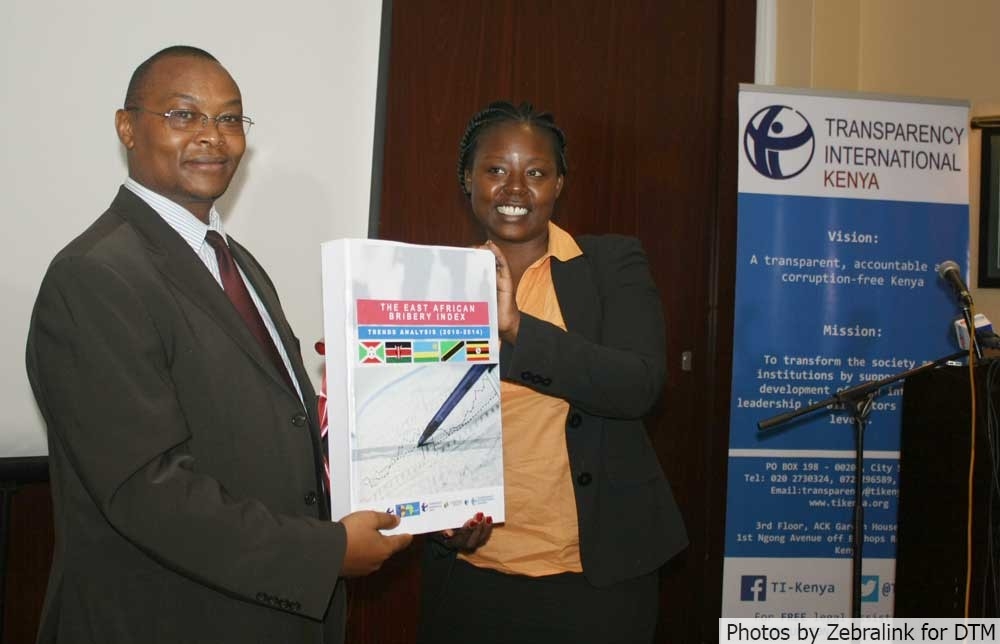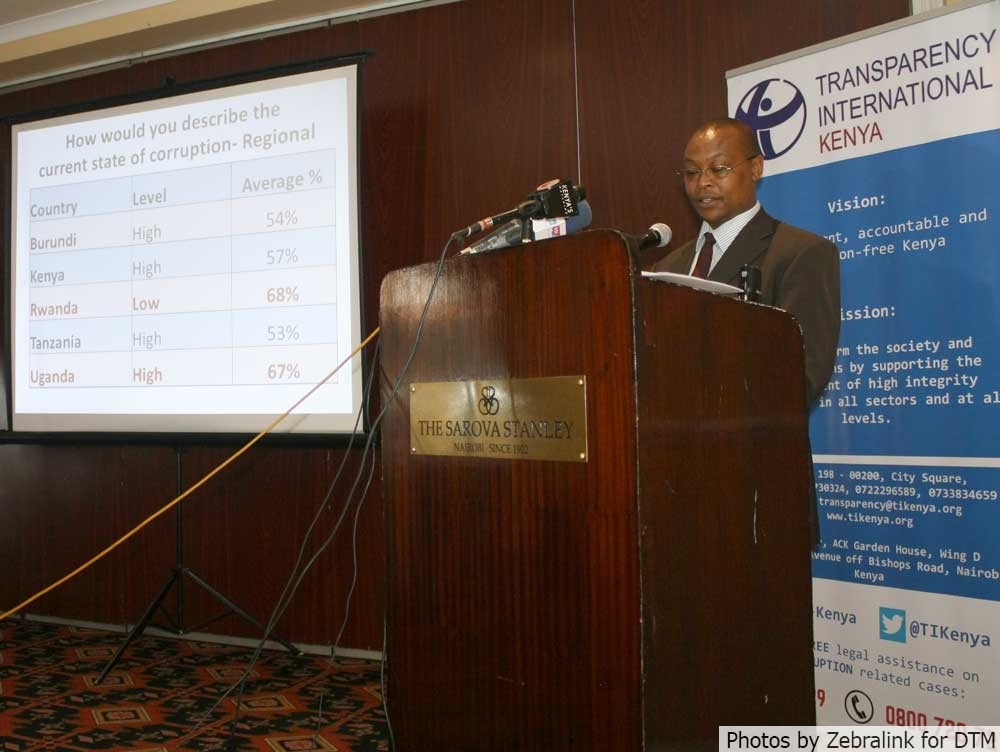AN ANALYSIS OF THE EAST AFRICAN BRIBERY INDEX 2010-2014
The Development Through Media (DTM) media team was recently at the forum on the Launch of the East African Bribery index analysis (2010-2014).The meeting was held at The New Stanley hotel on 10 December 2015 as part of Transparency International-Kenya (TI-Kenya) CSO capacity building, knowledge gathering, sharing and building networks.
The Development Through Media (DTM) team was recently at the Launch of the East African Bribery index analysis (2010-2014).The meeting was held at The New Stanley hotel on 10 December 2015 as part of Transparency International-Kenya (TI-Kenya) CSO capacity building, knowledge gathering, sharing and building networks.
TI-Kenya is a not-for-profit organization whose aim is to develop a transparent and corruption free society through good governance and social justice initiatives. TI-Kenya is one of the autonomous chapters of the global Transparency International movement that are bound by a common vision of a corruption-free world.
TI-Kenya used the forum, to highlight the ongoing trend on bribery among the five East African states of Kenya, Uganda, Tanzania, Burundi and Rwanda. The aim of the survey was to map out bribery experiences of citizens across the five East African countries when interacting with key public service institutions and sectors.
The report indicated a clear pattern showing the public’s lack of confidence on governments’ efficiency in responding to corruption. Surveyed respondents across the region perceived their governments as not doing enough to handle this problem over the five years under study. With the exception of Rwanda, respondents in all the countries across all the years, perceived their governments as not doing enough. Coupled with this, was the fear that corruption levels are likely to increase in the subsequent years.
Perhaps it is such fear, coupled with some realities and experiences, that informed low levels of corruption reporting, as the survey found out. In Kenya, the prospects of tackling corruption in the future as perceived by respondents, have significantly worsened. For instance, in 2010, 56% of respondents perceived corruption levels to be high. This rose to 81% in 2014. Rwanda, though performing much better in terms of perception, also seems to be deteriorating, from a low of 1.3% of the respondents that viewed corruption to be high in 2010, to 16% in 2014.
DTM will continue to support TI-Kenya in its endeavour to inform and engage the public on key issues surrounding corruption such as the East Africa Bribery index analysis 2010-2014.
For more information please visit the TI-Kenya wenbsite

















